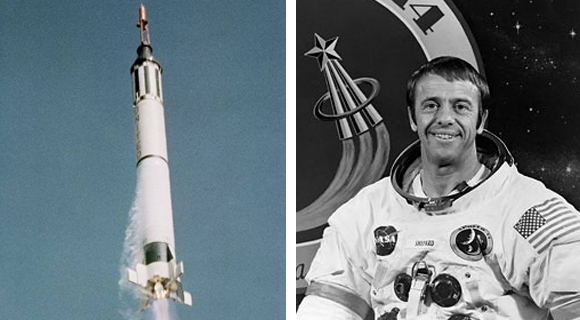May 05, 1961: Alan Shepard Becomes First American in Space

On May 05, 1961, history was made when American astronaut Alan Shepard became the first American to travel into space. This momentous achievement was the result of years of intense competition between the United States and the Soviet Union, known as the Space Race.
The Space Race was fueled by Cold War tensions and a desire for superiority between the two world powers. In 1957, the Soviet Union shocked the world when they launched Sputnik, the first satellite, into orbit. This event raised concerns in the United States and prompted the government to invest heavily in space technology and engineering. NASA was created in 1958, with the goal of putting an American into space.
Shepard was one of seven astronauts selected for NASA's Project Mercury, a program designed to put a man in space. He was chosen for his exceptional piloting skills and his experience as a naval aviator. On May 05, 1961, Shepard was launched into space aboard the Freedom 7 spacecraft, which was powered by the Mercury-Redstone rocket.
The flight lasted just over 15 minutes, but it was a major achievement for the United States. Shepard reached an altitude of 116 miles above the Earth's surface and experienced weightlessness for several minutes. He also piloted the spacecraft manually, demonstrating the skills necessary for future space missions.
Shepard's flight was a pivotal moment in the Space Race. It showed that the United States was capable of competing with the Soviet Union in space technology and engineering. It also paved the way for future missions, such as John Glenn's orbital flight in 1962.
In conclusion, Alan Shepard's historic flight on May 05, 1961, marked a significant milestone in the Space Race and the history of space exploration. It demonstrated the United States' ability to compete with the Soviet Union and laid the groundwork for future space missions. Shepard's bravery and skill as an astronaut inspired generations of Americans to pursue careers in science, technology, engineering, and mathematics (STEM), and his legacy continues to inspire us today.